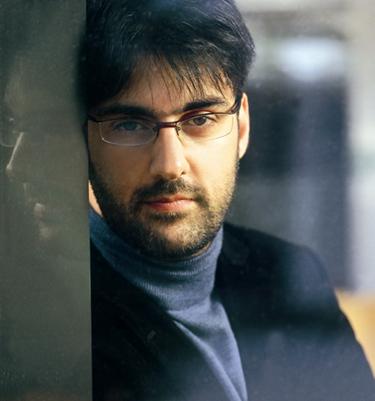The roar with which Leonidas Kavakos and Emanuel Ax dispatched Beethoven’s mighty Op. 30 C minor Violin Sonata – flinging off the writhing semiquaver coils of the Finale with desperate vigour – was enough to remind anyone in the Wigmore Hall last night of the serious talent of this Greek violinist. It was not however quite enough to banish the memory of the evening’s whimpering start – the ragged gesture in the general direction of the Violin Sonata in A Op. 12 No. 2 – with which we opened.
From the flurry of competition wins that launched his career, Kavakos has built a mature performing schedule that includes almost as much chamber music as solo work; he even has his own annual chamber music festival in Athens. His might not be the most explicitly communicative of styles, but Kavakos’s commitment to musical interplay and textural exploration is evident in the best of his concerto interpretations as well as his ensemble performances. So whether it was a lack of rehearsal time, unfamiliarity with the music, or just a bad start that blighted the good-natured Sonata in A (tuning, tone-colour and phrasing all came in for a kicking), the result was as unexpected as it was brutal.
In the C minor Sonata Kavakos’s edgy brilliance finally had space to stretch, his expressiveness given reason and scope to justify it
More interesting (if more predictable) was the textural contrast between the two musicians. Ax’s technique is a thing of majesty, so absolute in its authority as to be able to do away with large gestures in favour of a blended warmth that cossets and swells the smallest pianissimo. Kavakos by contrast celebrates gesture, risking control, musical architecture and line in order to attempt faster attack, harder connection of the bow through the string, and greater tonal extremes. With Ax spreading a damask backdrop to the Andante, Kavakos’s choppier, more guttural approach struck the ear as ungenerous, and the imitative exchanges of the closing Allegro did little to change this.
Sticking with the early Op. 12 Sonatas, things improved a little with the Sonata in Eb. The noble Rondo theme allowed Ax into the foreground, swelling into a melody that lost sheen as it passed to the violin. There was greater authority here from Kavakos, but also some odd little musical ticks; a tendency to start under the note and round upwards with vibrato seemed at odds with the clean, modern tone – an affectation notably absent in the second half and its meatier and more familiar works.
 The spirit of the Op. 30 Sonata in A is surely exemplified by the final bars of the Adagio: a delicate shrug of a closing that sees the violin pizzicato countered by a tiny piano sigh – the last word in understated endings. The simplicity seemed to suit Kavakos’s mood rather better, drawing lyricism from him that finally swelled into the equal of Ax’s (pictured right) tone, and was visually matched by the first visible signs of conscious musical dialogue in the Allegretto variations. The athleticism of Ax’s left hand in its starring variation seemed to galvanise Kavakos further, and the witty musical game of pass the parcel that follows saw the two exchanging the chordal subject in an ever more outlandish range of tones and accents.
The spirit of the Op. 30 Sonata in A is surely exemplified by the final bars of the Adagio: a delicate shrug of a closing that sees the violin pizzicato countered by a tiny piano sigh – the last word in understated endings. The simplicity seemed to suit Kavakos’s mood rather better, drawing lyricism from him that finally swelled into the equal of Ax’s (pictured right) tone, and was visually matched by the first visible signs of conscious musical dialogue in the Allegretto variations. The athleticism of Ax’s left hand in its starring variation seemed to galvanise Kavakos further, and the witty musical game of pass the parcel that follows saw the two exchanging the chordal subject in an ever more outlandish range of tones and accents.
The moody core of the Op. 30 triptych, glorying in Beethoven’s most charged key of C minor, the Violin Sonata No. 2, is a lion among drawing-room lapdogs. Here Kavakos’s edgy brilliance finally had space to stretch, his expressiveness given reason and scope to justify it. With so much more emotional elbow room, what had been wilfully straight and constrained released into an Allegro that lived up to its advertised con brio. The bristling fortissimos and jagged edges of the first movement found balance in a crisp Scherzo, before coming together for the Finale – an altogether more emphatic last word than any of the evening’s predecessors.
An uneven evening, but one whose triumphant finish would be hard to deny. Ax is the consummate chamber musician, ever alert, ever colouring, scheming over his textures, however supporting. While it was a shame to see such grown-up musicianship sabotaged initially by the slapdash sulkiness of Kavakos, at its best this partnership brings a charge to Ax’s performance that he alone cannot produce; a dangerous, confronting energy finds its way among the glossy technique, demanding attention, and more than justifying it.















Add comment